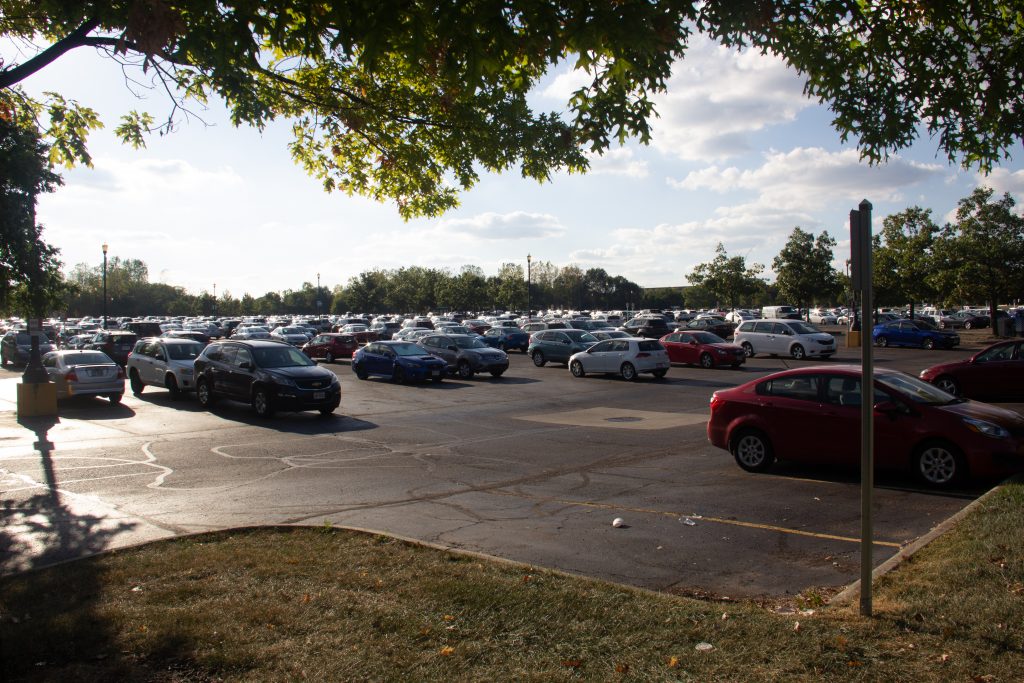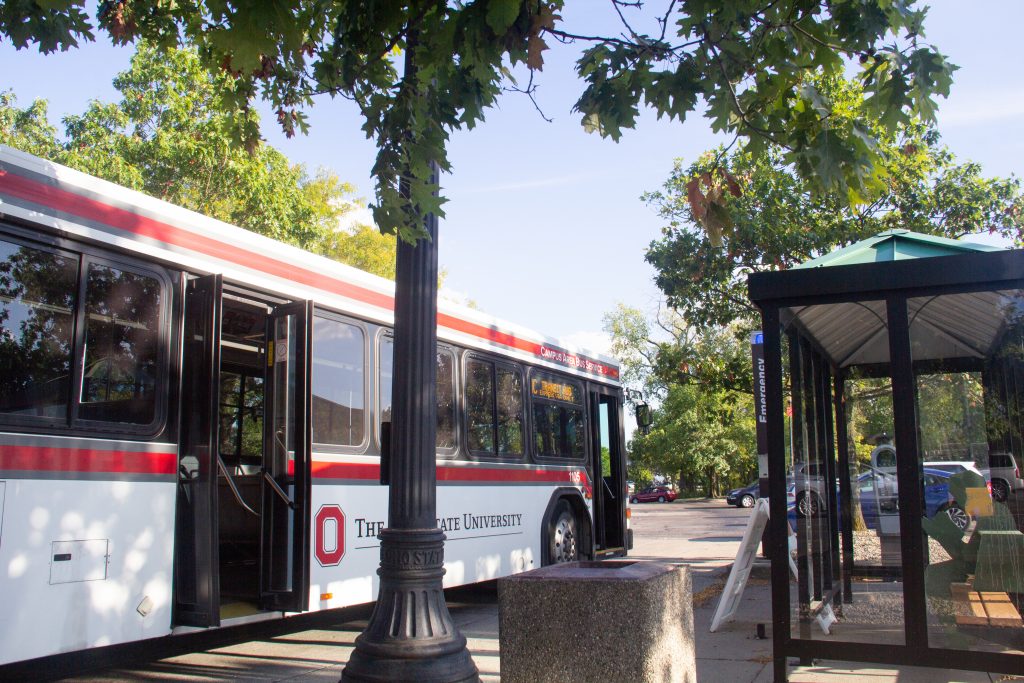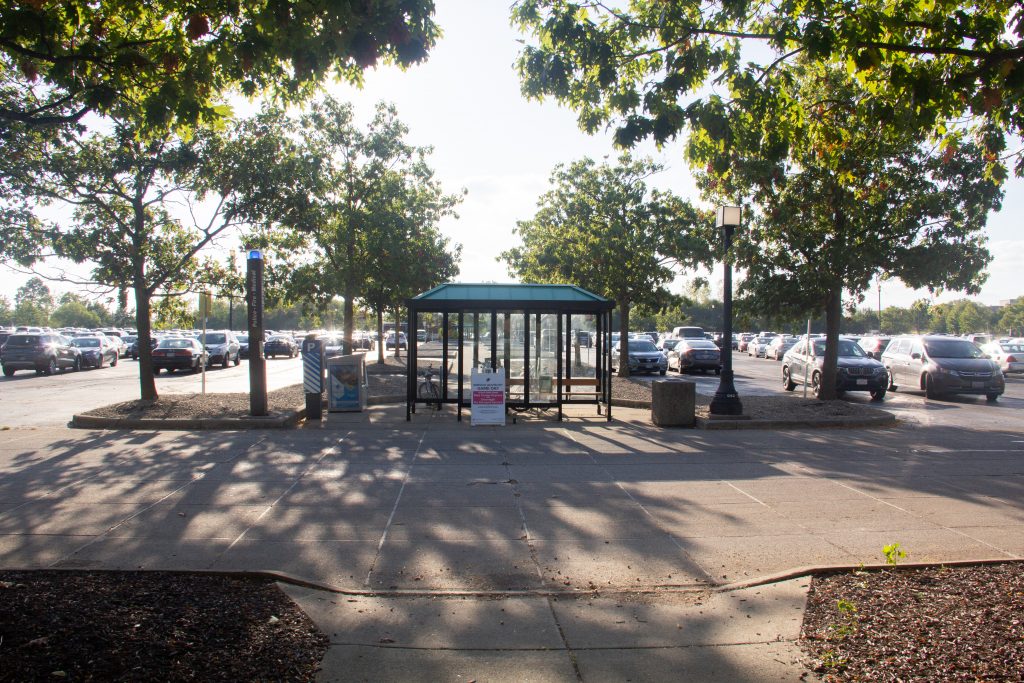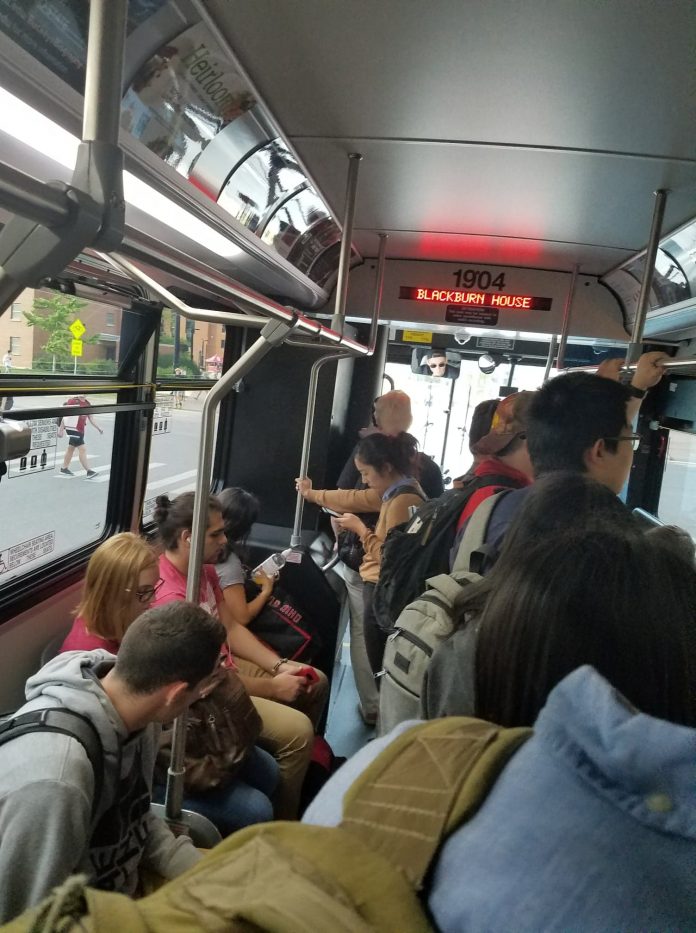By Philip Hurier, Industrial Design, Sep 15, 2019
It’s a Sunday, and large vacant concrete plains smolder under the sun’s heat. Tattooed with yellow lines, tomorrow, these barren spaces will be packed with cars. Scores of students and staff of The Ohio State University will flood the little bus stop stations that are spread throughout the CABS (College Area Bus System) fixed-route lines that circulate through all of campus. Other commuters are arriving via public transit, micromobility, microtransit, and self-propelled modes. No matter how they arrive, they and the on-campus dwellers will converge on an area that is a sprawling 1665 acres (around 2.6 square miles). Even though most academic activity can be found in the academic core (east of 315, south of Lane Avenue, west of High Street and north of 11th Avenue), OSU is much more than this area, and we are at a transition period for the campus over the next couple of decades as expansion plans are implemented. When the center focus of campus becomes the Olentangy riverwalk, the distance from the east residential areas to the west campus Innovation District will have students looking for other last mile transportation solutions than walking. There is an opportunity to re-examine the current mobility ecosystem of OSU and determine if there is a need for a plan as to how students will move around in the future campus.

Over 4000 parking spots shift occupancy throughout the weekdays in the West Campus lot. 
A constant flow of CABS stop at this station throughout the day. 
This CABS station seems out of scale to provide shelter for the number of spaces available.
What we know is that the expansion in Framework 2.0 to west campus brings an additional third of total building square footage. It also displaces many parking lots, and introduces the riverwalk area as the center focus of campus. This means a lot of change. The increased traffic (vehicle and foot) making the trip from central campus to the west campus will increase greatly. Currently, the distance from the Oval to the center of the west campus lot is 1.6 miles as the crow flies (in a straight line). Factor in the time it takes for people to walk (around 265 feet per minute) and you are looking at a greater than 30 minute walking time, not including following the actual walkways that do exist. If it starts to rain in the middle of that walk, well, hopefully your laptop is protected.
Even as it stands, students who live on campus, are looking for a quicker way to make it across central campus. Commuter students have already made the trip from off-campus to campus, and now the extra transit time starts to weigh on them. According to the Marchetti constant, generally people are willing to commute about a half-hour, one way, from their homes each day. Only 8% of the students surveyed say they would walk for more than 20 minutes before looking for alternate means of transportation.
The current solution for these outlying areas of campus is CABS. It works great, most of the time. During rush hour, some students have said they prefer to walk because you never know how long you will be stuck in traffic once you get on the bus, while walking has a consistent time result. Walking has its own issues.
When walking for twenty or more minutes, any student who has been caught in a downpour knows that it is nice to be carrying an umbrella. Also, if they are walking that far to go to school, then they likely don’t want to come back to get something to eat, so they are carrying a lunch as well. Oh yea, and a water bottle. It may get a little chilly in the classroom, so a jacket is useful to have as well. They stack all of their classes on the same days so they don’t have to go through this routine more times than necessary, so they are carrying all of their textbooks as well. It all adds up. Carrying that much for a twenty plus minute duration has serious effects on your back and health in general.
How about we forget about all the ergonomic challenges and focus on CABS as a solution. How many college campuses do you suppose uses a busing system. If you said a lot, then I think that would probably be on the low end side. How does this system give us an advantage over other potential choices for higher education? We could use some more innovative and forward thinking solutions to solve this issue, and funny that this west campus expansion will be called the ‘Innovation District’. Even the school up north is running autonomous vehicle pilot programs. In fact, they have a program dedicated to encouraging businesses to test their new technologies there. In this era, the amenities and culture are the attraction for new young talent. Columbus, itself, is making the leap forward to new mobility solutions, as they test a micro-transit pilot program out in Grove City. This is great, but normally it is the campus making the first move, not the other way around. We should be the ones looking into mobility as a service.
One could argue that the need for being a mobility provider would be a responsibility of a campus of our size. Half of our undergraduates live on campus and do not have their own means of transportation beyond human powered propulsion. There must be strong evidence supporting the success of students and living on campus as the University has increased its requirement to living on campus through the second academic year of students. We see the attempt to create this ease of mobility for students living on campus, but also for students arriving from off campus. CABS plays an important role in connecting the latter set to their classes for the day.
The ridership of CABS is a sign of a healthy demand for mobility services. The Public Private Partnership (3P) that exists with OSU and COTA may be one of the most heavily seized opportunities that students leverage. This is because the life of a student does not solely revolve around campus. We often must travel to purchase groceries, clothes, entertainment, etc. It is clear that an opportunity exists in the mobility ecosystem of OSU, and we must look back at what we have done previously, what we are doing currently, and what should we be doing in the future to meet the future growth demands.
We have used buses and shuttles, and we currently use them as well. We have contracts with 2 of 4 electric scooter entities with the other two soon to follow. These micromobility solutions serve an obvious need for first/last mile mobility aids. We also currently have a 3P with Lyft SmartRide. The campus is subsidizing the first 5 dollars of any trips that are taken within the geofence of our campus area after 9pm until 3am. This service caters towards the issue of safety more than any other.
What we can expect in the future is more distance to cover, higher concentration of parking commuters in any given outlying area, and some new technologies finding their way into our campus lives. How can we better serve our mobility needs as we continue to grow, and how can we apply them to help connect our regional campuses as well?




